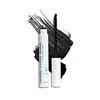What's inside
What's inside
 Key Ingredients
Key Ingredients

 Benefits
Benefits

 Concerns
Concerns

 Ingredients Side-by-side
Ingredients Side-by-side

Water
Skin ConditioningAcrylates/Ethylhexyl Acrylate Copolymer
Vp/Eicosene Copolymer
Synthetic Beeswax
Emulsion StabilisingVp/Hexadecene Copolymer
1,2-Hexanediol
Skin ConditioningPalmitic Acid
EmollientEuphorbia Cerifera Wax
Stearic Acid
CleansingGlycerin
HumectantRayon
Sodium Dehydroacetate
PreservativePotassium Hydroxide
BufferingHydroxyethylcellulose
Emulsion StabilisingPolybutene
Tocopherol
AntioxidantSodium Hyaluronate
HumectantTetrasodium Glutamate Diacetate
Biotin
AntiseborrhoeicPalmitoyl Hexapeptide-12
Skin ConditioningCI 77499
Cosmetic ColorantWater, Acrylates/Ethylhexyl Acrylate Copolymer, Vp/Eicosene Copolymer, Synthetic Beeswax, Vp/Hexadecene Copolymer, 1,2-Hexanediol, Palmitic Acid, Euphorbia Cerifera Wax, Stearic Acid, Glycerin, Rayon, Sodium Dehydroacetate, Potassium Hydroxide, Hydroxyethylcellulose, Polybutene, Tocopherol, Sodium Hyaluronate, Tetrasodium Glutamate Diacetate, Biotin, Palmitoyl Hexapeptide-12, CI 77499
Water
Skin ConditioningButylene Glycol
HumectantGlycerin
HumectantVp/Eicosene Copolymer
Stearic Acid
CleansingBehenyl Behenate
EmollientCopernicia Cerifera Wax
Glyceryl Stearate
EmollientPolyhydroxystearic Acid
EmulsifyingPolyisobutene
Euphorbia Cerifera Wax
Panthenol
Skin ConditioningBiotinoyl Tripeptide-1
Acetyl Tetrapeptide-3
Skin ProtectingTrifolium Pratense Flower Extract
AstringentSodium Hyaluronate
HumectantTocopheryl Acetate
AntioxidantAcacia Senegal Gum
Masking1,2-Hexanediol
Skin ConditioningCaprylyl Glycol
EmollientHydroxyacetophenone
AntioxidantXanthan Gum
EmulsifyingTrisodium Ethylenediamine Disuccinate
Dextran
Potassium Hydroxide
BufferingCI 77499
Cosmetic ColorantWater, Butylene Glycol, Glycerin, Vp/Eicosene Copolymer, Stearic Acid, Behenyl Behenate, Copernicia Cerifera Wax, Glyceryl Stearate, Polyhydroxystearic Acid, Polyisobutene, Euphorbia Cerifera Wax, Panthenol, Biotinoyl Tripeptide-1, Acetyl Tetrapeptide-3, Trifolium Pratense Flower Extract, Sodium Hyaluronate, Tocopheryl Acetate, Acacia Senegal Gum, 1,2-Hexanediol, Caprylyl Glycol, Hydroxyacetophenone, Xanthan Gum, Trisodium Ethylenediamine Disuccinate, Dextran, Potassium Hydroxide, CI 77499
Ingredients Explained
These ingredients are found in both products.
Ingredients higher up in an ingredient list are typically present in a larger amount.
1,2-Hexanediol is a synthetic liquid and another multi-functional powerhouse.
It is a:
- Humectant, drawing moisture into the skin
- Emollient, helping to soften skin
- Solvent, dispersing and stabilizing formulas
- Preservative booster, enhancing the antimicrobial activity of other preservatives
Ci 77499 is also hydrated iron III oxide. It is created from mixing red and black iron oxides. This helps give shades of darkness to a product.
Iron III oxides are classified as inorganic chemicals for coloring.
Glycerin is already naturally found in your skin. It helps moisturize and protect your skin.
A study from 2016 found glycerin to be more effective as a humectant than AHAs and hyaluronic acid.
As a humectant, it helps the skin stay hydrated by pulling moisture to your skin. The low molecular weight of glycerin allows it to pull moisture into the deeper layers of your skin.
Hydrated skin improves your skin barrier; Your skin barrier helps protect against irritants and bacteria.
Glycerin has also been found to have antimicrobial and antiviral properties. Due to these properties, glycerin is often used in wound and burn treatments.
In cosmetics, glycerin is usually derived from plants such as soybean or palm. However, it can also be sourced from animals, such as tallow or animal fat.
This ingredient is organic, colorless, odorless, and non-toxic.
Glycerin is the name for this ingredient in American English. British English uses Glycerol/Glycerine.
Learn more about GlycerinPotassium hydroxide is commonly known as caustic potash. It is used to fix the pH of a product or as a cleaning agent in soap. In cleansers, it is used for the saponification of oils.
Sapnification is the process of creating fatty acid metal salts from triglycerides and a strong base. During this process, Potassium Hydroxide is used up and is not present in the final product.
Using high concentrations of Potassium Hydroxide have shown to irritate the skin.
Learn more about Potassium HydroxideSodium Hyaluronate is hyaluronic acid's salt form. It is commonly derived from the sodium salt of hyaluronic acid.
Like hyaluronic acid, it is great at holding water and acts as a humectant. This makes it a great skin hydrating ingredient.
Sodium Hyaluronate is naturally occurring in our bodies and is mostly found in eye fluid and joints.
These are some other common types of Hyaluronic Acid:
Learn more about Sodium HyaluronateStearic Acid is a fatty acid. It is an emollient, emulsifier, and texture enhancer.
As an emollient, stearic acid helps soften skin. It aids the skin's protective barrier by preventing water loss. It also provides a gentle cleansing effect without stripping away natural oils.
Stearic acid may also be used to enhance the texture of products. It can add volume and stabilize ingredients such as water and oil. This can help water and oil ingredients from separating.
Sources of stearic acid include animal or vegetable fats/oils such as coconut or shea. It can be naturally found in butter, cocoa butter, shea butter, vegetable fats, and animal tallow.
This ingredient may not be Malassezia folliculitis, or fungal-acne safe.
Learn more about Stearic AcidWe don't have a description for Vp/Eicosene Copolymer yet.
Water. It's the most common cosmetic ingredient of all. You'll usually see it at the top of ingredient lists, meaning that it makes up the largest part of the product.
So why is it so popular? Water most often acts as a solvent - this means that it helps dissolve other ingredients into the formulation.
You'll also recognize water as that liquid we all need to stay alive. If you see this, drink a glass of water. Stay hydrated!
Learn more about WaterEuphorbia Cerifera wax comes from a shrub in Northern Mexico. It is used to stabilize formulations and has emollient properties.
Emollients form a thin layer on top of skin to prevent water from evaporating, keeping skin and lips hydrated.
According to a manufacturer, this wax can range from a yellow/brown color to translucent.
Learn more about Euphorbia Cerifera Wax